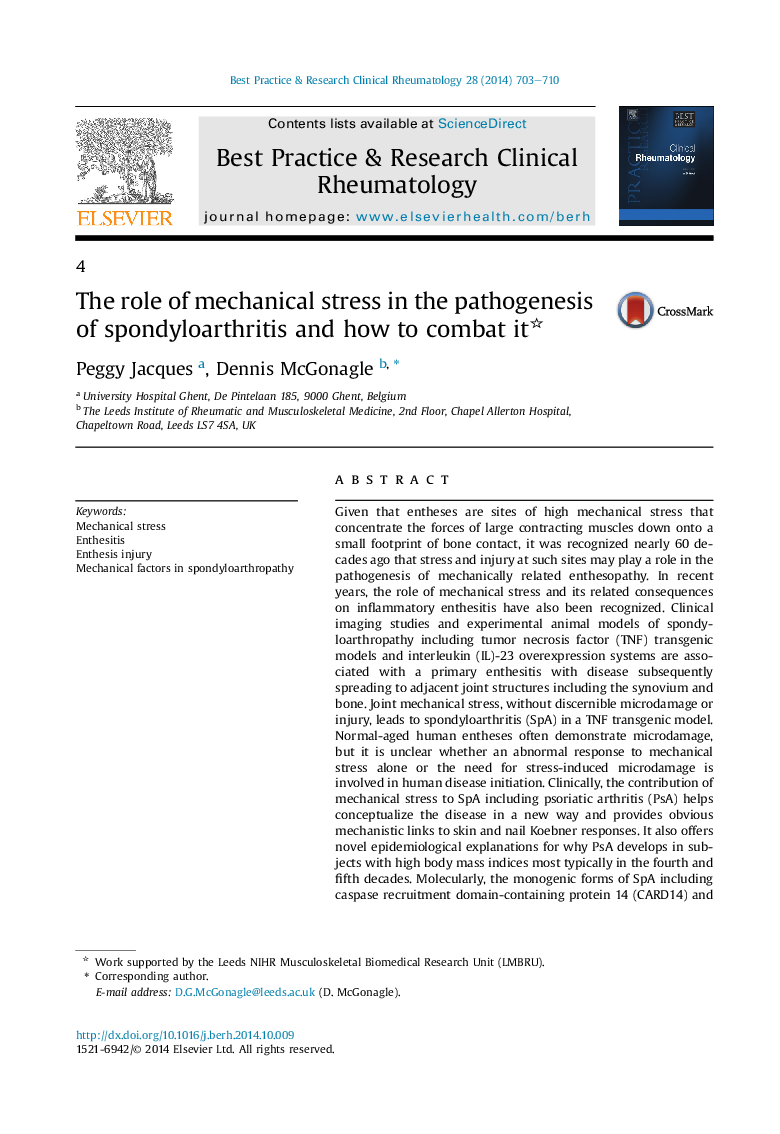| کد مقاله | کد نشریه | سال انتشار | مقاله انگلیسی | نسخه تمام متن |
|---|---|---|---|---|
| 3343071 | 1214395 | 2014 | 8 صفحه PDF | دانلود رایگان |
Given that entheses are sites of high mechanical stress that concentrate the forces of large contracting muscles down onto a small footprint of bone contact, it was recognized nearly 60 decades ago that stress and injury at such sites may play a role in the pathogenesis of mechanically related enthesopathy. In recent years, the role of mechanical stress and its related consequences on inflammatory enthesitis have also been recognized. Clinical imaging studies and experimental animal models of spondyloarthropathy including tumor necrosis factor (TNF) transgenic models and interleukin (IL)-23 overexpression systems are associated with a primary enthesitis with disease subsequently spreading to adjacent joint structures including the synovium and bone. Joint mechanical stress, without discernible microdamage or injury, leads to spondyloarthritis (SpA) in a TNF transgenic model. Normal-aged human entheses often demonstrate microdamage, but it is unclear whether an abnormal response to mechanical stress alone or the need for stress-induced microdamage is involved in human disease initiation. Clinically, the contribution of mechanical stress to SpA including psoriatic arthritis (PsA) helps conceptualize the disease in a new way and provides obvious mechanistic links to skin and nail Koebner responses. It also offers novel epidemiological explanations for why PsA develops in subjects with high body mass indices most typically in the fourth and fifth decades. Molecularly, the monogenic forms of SpA including caspase recruitment domain-containing protein 14 (CARD14) and IL36RN mutations have site-specific expression of mutated proteins in the skin, thus offering a direct molecular link between local inflammation-related pathway dysregulation and local stress or injury in disease causation. Given that many of the pathways that govern both immunity and mechanical stress including extracellular-signal-regulated kinase (ERK) and mitogen-activated protein kinase (MAPK) are shared, it may be difficult to develop strategies that selectively target mechanical stress-related pathways. However, occupational- and obesity-related factors may be potentially modifiable in susceptible individuals to prevent or ameliorate disease.
Journal: Best Practice & Research Clinical Rheumatology - Volume 28, Issue 5, October 2014, Pages 703–710
